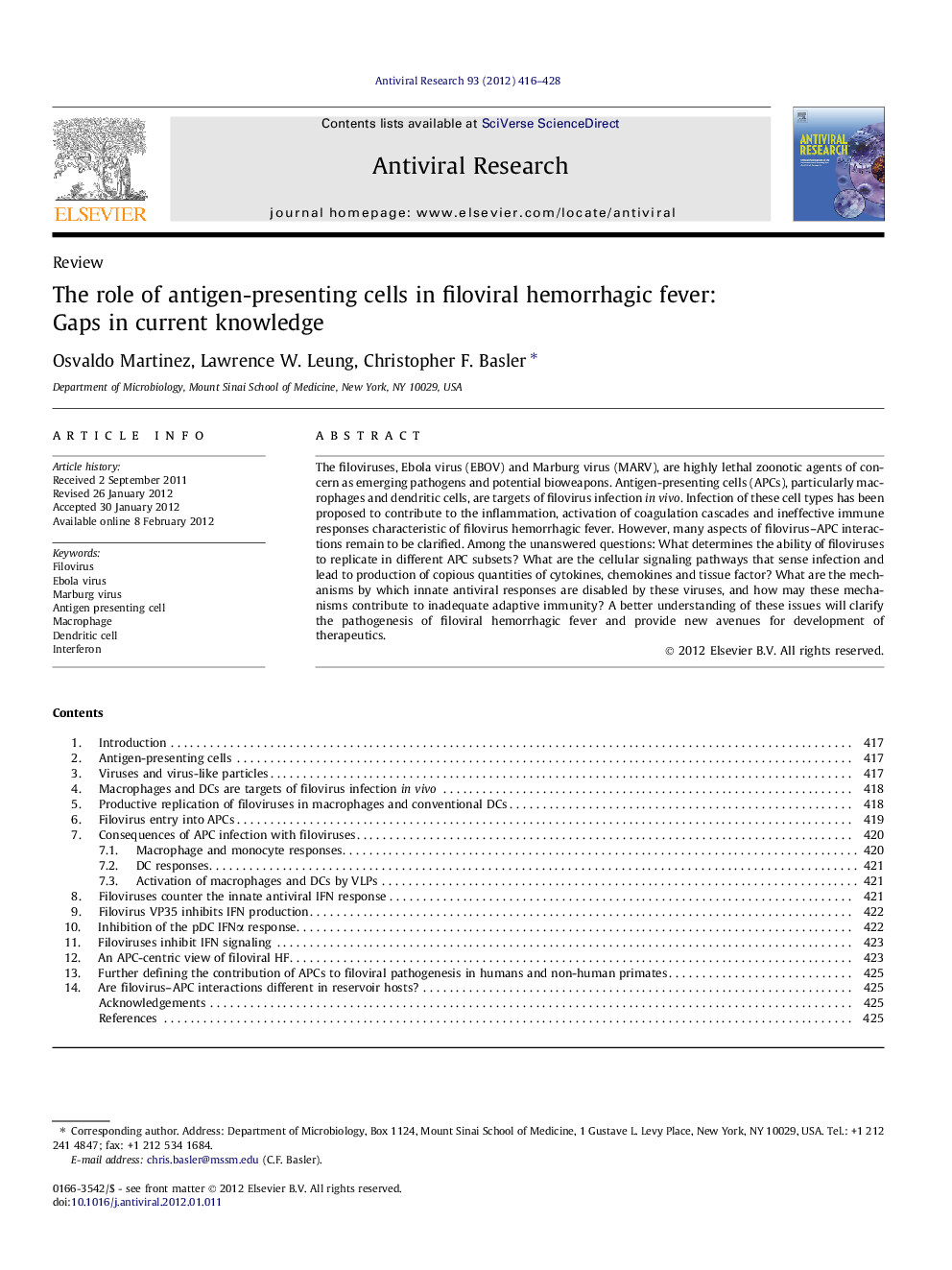| Article ID | Journal | Published Year | Pages | File Type |
|---|---|---|---|---|
| 2510048 | Antiviral Research | 2012 | 13 Pages |
The filoviruses, Ebola virus (EBOV) and Marburg virus (MARV), are highly lethal zoonotic agents of concern as emerging pathogens and potential bioweapons. Antigen-presenting cells (APCs), particularly macrophages and dendritic cells, are targets of filovirus infection in vivo. Infection of these cell types has been proposed to contribute to the inflammation, activation of coagulation cascades and ineffective immune responses characteristic of filovirus hemorrhagic fever. However, many aspects of filovirus–APC interactions remain to be clarified. Among the unanswered questions: What determines the ability of filoviruses to replicate in different APC subsets? What are the cellular signaling pathways that sense infection and lead to production of copious quantities of cytokines, chemokines and tissue factor? What are the mechanisms by which innate antiviral responses are disabled by these viruses, and how may these mechanisms contribute to inadequate adaptive immunity? A better understanding of these issues will clarify the pathogenesis of filoviral hemorrhagic fever and provide new avenues for development of therapeutics.
► Antigen-presenting cells (APCs) are important targets of filovirus infection in vivo. ► APCs are postulated to be major sites of virus replication and to promote inflammation. ► Understanding of filovirus–APC interactions will suggest novel therapeutic approaches. ► This review summarizes our current knowledge of filovirus–APC interactions.
